The relationship between sake and Japanese Cedar (sugi) is a long one full of tradition. Many people are aware of the wooden masu cups made from a type of Japanese cedar but few know the importance of the relationship between sake and this precious wood.
What is Sugi?
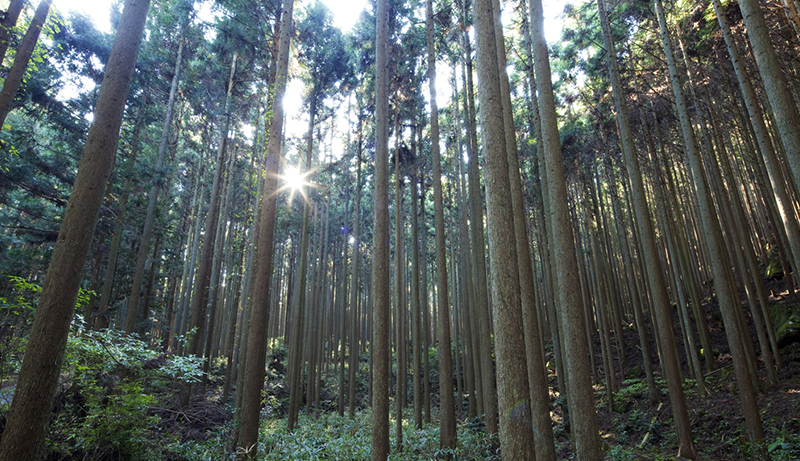
Sugi (Cryptomeria japonica), most commonly known in English as "Japanese Cedar," is actually in the cypress family. Indigenous to Japan, the sugi grows in abundance throughout most of the country. Sugi wood is known for its pleasant fragrance, lustrous color and soft, pliable texture. Regarded for centuries as a wood of luxury, sugi has been used for the construction of fine palaces, shrines, temples, and even in shipbuilding. One of the most famous uses of sugi, however, has been in the use of making taru (sake barrels).
Yoshino Sugi and the Taru (sake barrel)
![[Fragrant reddish section][Beautiful whitish section] [Fragrant reddish section][Beautiful whitish section]](images/sakeandsugi02.jpg)
![[Fragrant reddish section][Beautiful whitish section] [Fragrant reddish section][Beautiful whitish section]](images/sp_sakeandsugi02.jpg) Because of its pleasant fragrance and rot-resistant qualities, sugi has been the favorite material for taru (sake barrel) production. A number of different sugi varieties may be used for barrel making but none has been more loved than Yoshino Sugi. The Yoshino Sugi is especially known for its fragrant reddish wood in the center and middle section and its beautiful light, white-like color wood in the outer section. Both wood sections may be used to make excellent sake barrels but the section of wood with a white exterior and red interior is especially prized in sake barrel making.
Because of its pleasant fragrance and rot-resistant qualities, sugi has been the favorite material for taru (sake barrel) production. A number of different sugi varieties may be used for barrel making but none has been more loved than Yoshino Sugi. The Yoshino Sugi is especially known for its fragrant reddish wood in the center and middle section and its beautiful light, white-like color wood in the outer section. Both wood sections may be used to make excellent sake barrels but the section of wood with a white exterior and red interior is especially prized in sake barrel making.
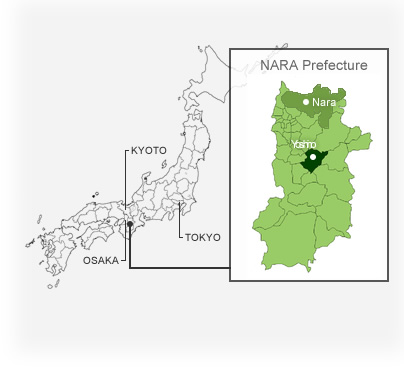
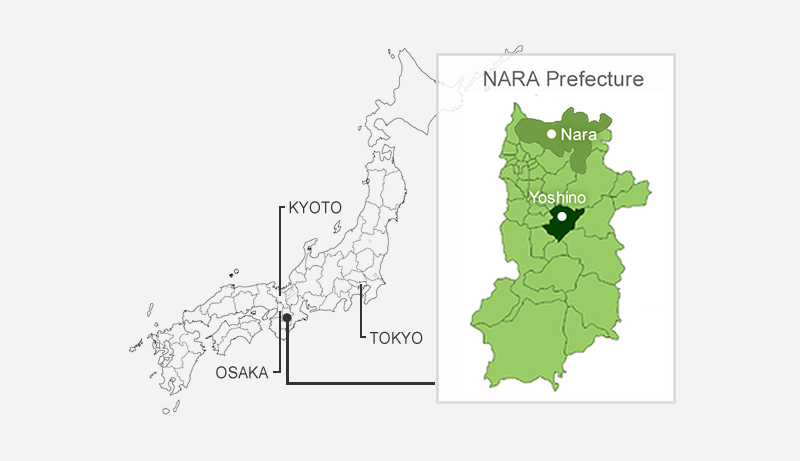 Yoshino Sugi is produced in the area of Yoshino located in the heart of Nara Prefecture. For centuries, Yoshino has been one of Japan's most famous forest areas but it reached a new pinnacle of fame in the 1700s just as the popularity of sake spread throughout Japan. The fragrant, luxurious wood of the Yoshino Sugi was deemed to be the best for packaging and shipping the delicious sakes from Nada (including Nishinomiya) and became in such high demand that supply became a new concern. As early as in the 1500s, enterprising individuals had recognized the value of reforestation efforts but by the 1700s, these efforts became of even more importance and the appearance of the yamamori (literally "protectors of the mountains") became a notable feature of the Yoshino Sugi forests. The yamamori worked both as a type of forest ranger to protect the trees as well as a type of "farmer" to plant and cultivate these precious trees.
Yoshino Sugi is produced in the area of Yoshino located in the heart of Nara Prefecture. For centuries, Yoshino has been one of Japan's most famous forest areas but it reached a new pinnacle of fame in the 1700s just as the popularity of sake spread throughout Japan. The fragrant, luxurious wood of the Yoshino Sugi was deemed to be the best for packaging and shipping the delicious sakes from Nada (including Nishinomiya) and became in such high demand that supply became a new concern. As early as in the 1500s, enterprising individuals had recognized the value of reforestation efforts but by the 1700s, these efforts became of even more importance and the appearance of the yamamori (literally "protectors of the mountains") became a notable feature of the Yoshino Sugi forests. The yamamori worked both as a type of forest ranger to protect the trees as well as a type of "farmer" to plant and cultivate these precious trees.
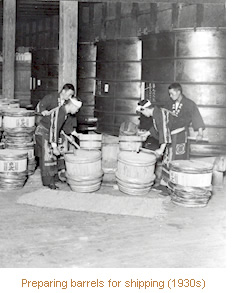
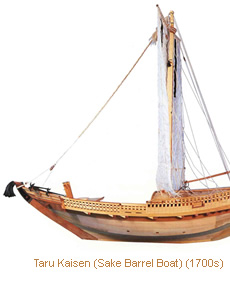
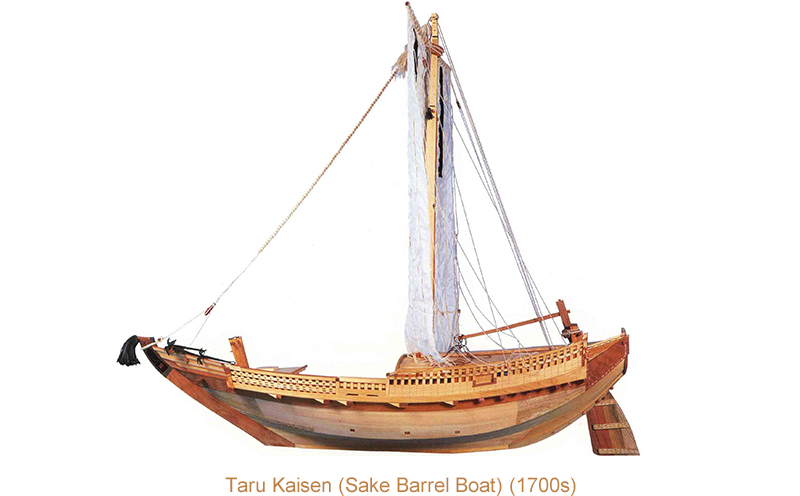 The Yoshino Sugi was a key element to fine sake packaging for over 200 years until the early 1900s when glass bottles came into wide use. As a sentimental favorite, however, we are proud to use wooden taru made from Yoshino Sugi to make "Hakushika Junmai Taru Sake." Produced by briefly aging junmai sake in wooden barrels made from Yoshino Sugi, this refreshingly aromatic sake is characterized by the pleasant scent of Japanese Cedar.
The Yoshino Sugi was a key element to fine sake packaging for over 200 years until the early 1900s when glass bottles came into wide use. As a sentimental favorite, however, we are proud to use wooden taru made from Yoshino Sugi to make "Hakushika Junmai Taru Sake." Produced by briefly aging junmai sake in wooden barrels made from Yoshino Sugi, this refreshingly aromatic sake is characterized by the pleasant scent of Japanese Cedar. 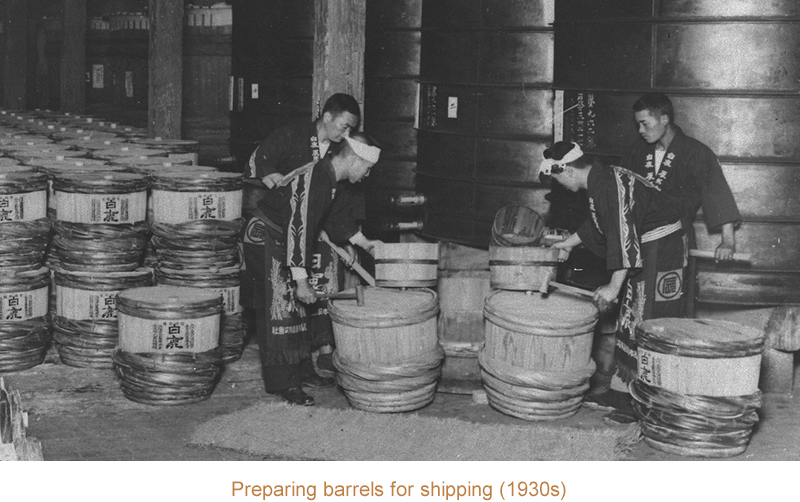
Sugidama (Sugi Ball)
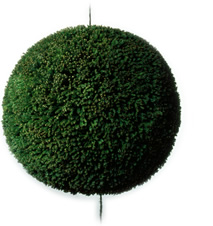
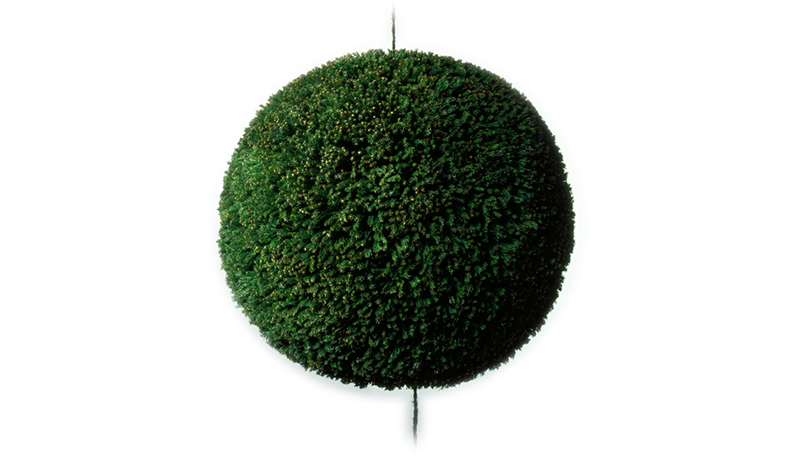 The sugidama is a traditional symbol used by sake brewers since olden times. When the fresh sake was available for sale, the sake brewery would hang a bright green sugidama made with fresh sugi fronds under the roof and over the entrance. Years ago when sake was produced only in winter months, the sugidama was especially effective to advertise the completion of a fresh brew. Now that we produce sake year round, we display the sugidama in fond remembrance of the joy and pride the brewers of years past held for each year's freshly made sake.
The sugidama is a traditional symbol used by sake brewers since olden times. When the fresh sake was available for sale, the sake brewery would hang a bright green sugidama made with fresh sugi fronds under the roof and over the entrance. Years ago when sake was produced only in winter months, the sugidama was especially effective to advertise the completion of a fresh brew. Now that we produce sake year round, we display the sugidama in fond remembrance of the joy and pride the brewers of years past held for each year's freshly made sake.
![[Making a new sugidama][Aged sugidama in front of sake shop] [Making a new sugidama][Aged sugidama in front of sake shop]](images/sakeandsugi07.jpg)
![[Making a new sugidama][Aged sugidama in front of sake shop] [Making a new sugidama][Aged sugidama in front of sake shop]](images/sp_sakeandsugi07.jpg)
![[Making a new sugidama][Aged sugidama in front of sake shop] [Making a new sugidama][Aged sugidama in front of sake shop]](images/sp_sakeandsugi08.jpg)
